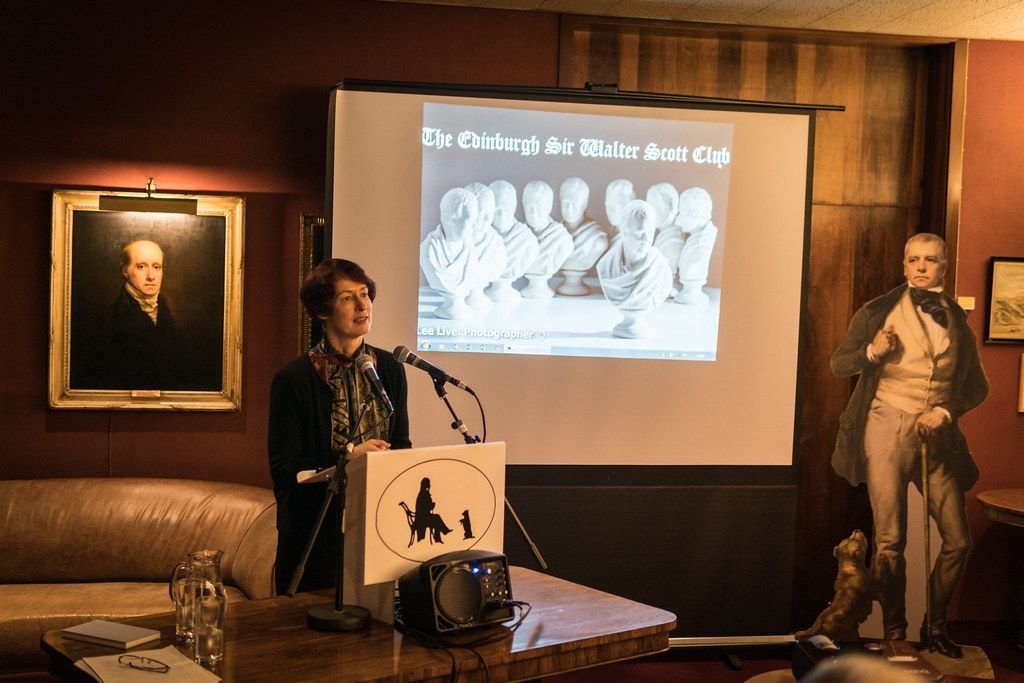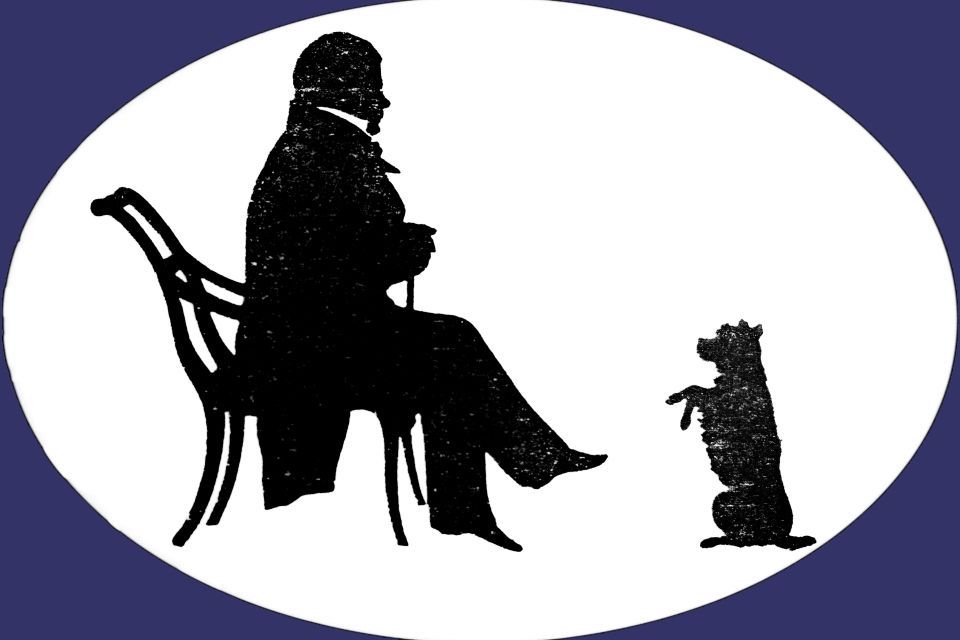Scott and the World in 1824
Thursday 29th November 2018
Summary of the Talk:
Her talk examined the year 1824 as a pivotal moment in a decade of transformation, looking at literary and historical developments and how Sir Walter Scott’s novels of that year—Saint Ronan’s Well and Redgauntlet—responded to the times.
Context of 1824
Literary Developments:
- William Hazlitt’s essays The Spirit of the Age assessed key figures shaping the time, including Scott.
- Scott’s novels Saint Ronan’s Well and Redgauntlet were published.
- A German forgery, Walladmor, falsely claimed to be a Scott translation and was later exposed.
- The public funeral of Lord Byron captured the imagination of Britain.
- Performance art flourished, including Charles Mathews' impersonations in London and Italian improvvisatore Tommaso Sgricci's spontaneous tragedies in Paris.
- Rossini, Beethoven, and Liszt all had significant musical premieres.
- The Athenaeum Club and the National Gallery were founded.
- King Kamehameha II of Hawaii and his wife died of measles in London.
Scientific and Economic Shifts:
- The Vagrancy Act of 1824 criminalized begging.
- British financial speculation reached unsustainable heights, leading to an economic bubble.
- Key scientific advancements included the Second Law of Thermodynamics, the electromagnet, non-Euclidean geometry, and the Braille alphabet.
- Famous consumables such as Cadbury’s chocolate, Colby cheese, and Glenlivet whisky emerged.
- The British imperial system of measurement was standardized.
Colonial and Global Events:
- Louis XVIII died, succeeded by the reactionary Charles X in France.
- The Anglo-Burmese War began.
- “Australia” was officially adopted as the name for the former “New Holland.”
- The Canada Company was established to promote settlement in Ontario.
Scott’s Response to the Age – Saint Ronan’s Well
Thematic Exploration:
- The novel critiques speculation—both financial and social—through land deals, gambling, and social climbing at a spa resort.
- The setting in the Scottish Borders features an aristocratic society obsessed with money and status.
- The character John Mowbray speculates on land to build a fashionable spa, creating Saint Ronan’s Well.
- Scott contrasts this speculative economy with Meg Dods, a traditional innkeeper who thrives on stable land ownership.
Social and Literary Critique:
- Scott satirizes the shifting communication networks and the book market, depicting a post office doubling as a circulating library that fails to serve its purpose.
- The book reflects the speculative frenzy of the 1820s—mirroring Scott’s own financial dealings.
- At the novel’s end, Mowbray demolishes the failed speculative spa, restoring stability.
Real-World Influence:
- Innerleithen in the Borders, considered a model for Saint Ronan’s Well, became a real-life tourist attraction.
- The Saint Ronan’s Games, established in 1827, and a cookbook by “Mrs. Margaret Dods” marketed themselves on Scott’s novel.
Scott’s Speculative History – Redgauntlet
A Counterfactual Narrative:
- Unlike Scott’s earlier Waverley novels, which followed real historical events, Redgauntlet imagines an unsuccessful 1765 Jacobite rebellion that never happened.
- This "what-if" history aligns with Isaac D’Israeli’s 1824 essay Of a History of Events Which Have Not Happened.
Parallels with Financial Speculation:
- The 1820s saw fictions in finance as well—most notably the fraudulent Poyais scheme, where Gregor MacGregor tricked British investors into funding a non-existent colony.
- Redgauntlet and Saint Ronan’s Well both reflect the speculative risks of the age, blending fiction and financial reality.
Conclusion
Scott was not only a participant in the speculative economy but also a perceptive analyst of its dangers. His novels of 1824 explore economic, social, and political speculation in ways that resonate even today.
Interesting Points
- Scott's work in 1824 mirrors modern issues – from real estate bubbles to gambling addiction and the flood of low-quality reading material.
- A real spa town grew from Saint Ronan’s Well – showing Scott’s role in shaping tourism.
- Redgauntlet helped establish alternate history as a genre – published the same year as the first essay on the subject.
- Financial fraud and fake news in the 1820s – the Poyais scheme shows how fiction influenced finance.

A warm welcome everyone to this, the last in the present sequence of talks to the Club, and I can think of nobody better equipped to fill the spot than our present speaker. Angela Esterhammer is Principal of Victoria College and Professor in the Department of English at the University of Toronto (positions incidentally in which she follows in the wake of the great Scott scholar Professor Jane Millgate). She works in the areas of British, German, and European Romanticism and nineteenth-century culture, from perspectives that emphasize performance, improvisation, and print culture. She is the author of Creating States: Studies in the Performative Language of John Milton and William Blake (1994), The Romantic Performative: Language and Action in British and German Romanticism (2000), and Romanticism and Improvisation, 1750-1850 (2008). Professor Esterhammer is also the General Editor of The Edinburgh Edition of the Works of John Galt, an international project to publish a 15-volume critical edition of Galt’s fiction and related non-fictional prose.
Tonight’s talk relates to her new book entitled Print and Performance in the 1820s: The Late-Romantic Information Age, which is forthcoming from Cambridge U.P. in 2019. This book examines interrelations among popular fiction, literary magazines, and innovative forms of theatre during the 1820s, a decade of rapid transformations in media, mobility, consumerism, and reading habits.
Specifically, the present talk will relate Saint Ronan’s Well and Redgauntlet to current events of the mid-1820s, especially the climate of speculation that dominated financial and literary markets.
Synopsis: With rapid changes taking place in mobility, communications, technology, and lifestyle, the 1820s felt like an era of transformation – and the year 1824 may be regarded as the crux of that volatile decade. This talk surveys events of 1824 in the literary-cultural centres of Edinburgh and London in conjunction with the era’s socioeconomic context, which was marked by rampant financial speculation that led to financial crisis by the end of the year. Against this background, the two novels that Scott published in 1824 reflect the spirit of the age. Saint Ronan’s Well, his only novel with a nineteenth-century setting, thematizes land speculation, marriage-market speculation, and gambling; responding to the risky economics that dominated the mid-1820s, it also critiques the publication practices and reading habits of its day. Appearing in June of 1824, Redgauntlet: A Tale of the Eighteenth Century approaches the theme of speculation in a different way, constructing an alternate history of the mid-eighteenth century by raising the possibility that a third Jacobite uprising might have started in 1765. Setting Redgauntlet in the context of real-life speculations of the 1820s suggests that – despite being himself caught up in the investment mania of the 1820s – Scott was an insightful analyst of the speculative spirit of the age.


